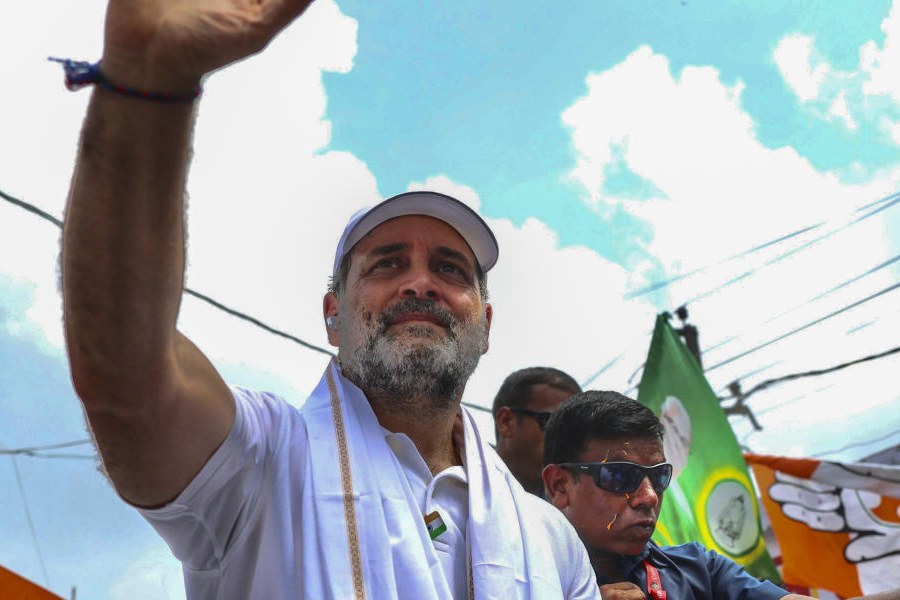 |
| (Top) Kojagori Lakshmi; Lakshmi as Kamala. (Sudeshna Banerjee) |
The non-Bengali Lakshmi has more wealth to bestow than her Bengali counterpart. So goes business wisdom in the artisans’ studios across the city where smaller idols are made.
Although both Lakshmis have the same identity as the goddess of wealth and prosperity, the distinction can easily be made by the difference in iconography. The goddess worshipped by Bengalis on kojagori purnima has two hands, one entwined around her casket and the other palm raised to bless. The Lakshmi worshipped on Diwali is in the form of Kamala. She is four-handed. The two hands at the back hold a lotus each. Of the two in front, one blesses, the other palm showers coins.
And she does shower more on her makers. No wonder Munilal Pal & Sons of Chetla Road don’t waste time making “Bengali Lakshmis”. “The margins are too small,” muttered one.
A big incentive for Lakshmi artisans is the bulk Diwali order from beyond Bengal. “It brings us ready cash in advance. Though we are wholesalers, we sell the unsold pieces from the Ultadanga Main Road pavement,” said Chhidam Pal of Palpara, near Ultadanga, supervising the packing of orders from Dhanbad. “Our artisans are more skilled,” he said, explaining the demand from Bengal.
The men at Munilal Pal & Sons were busy sending 50 cartons of idols to Delhi and Lucknow the day Bengal was celebrating Lakshmi Puja. Each carton carried 21 Lakshmi-Ganesha pairs.
Pradip Pal, too, has sent supplies to Varanasi, Ranchi and Patna from his studio near the Keoratala crematorium. “Take this idol. We sold the kojagori version for Rs 15. Now, we are charging Rs 50 for a Lakshmi-Ganesha pair, which means the Lakshmi idol is fetching Rs 10 more,” said Pradip, who has made 5,000 idols this Diwali compared to 1,000 for Lakshmi Puja,
“A Bengali Lakshmi goes for Rs 30 a pair. An idol worshipped by non-Bengali communities of the same size and finish fetches at least Rs 35,” added Bharat Prasad of Chetla, in the business for 17 years.
Priced between the two would be the Lakshmi sold on Poila Baisakh. Although that too has mainly Bengali clients, they are mostly traders, as opposed to householders who host the kojagori Lakshmi. “Perhaps the middle-class Bengali has less left to spend after Durga Puja,” reasoned Pradip.
In a 1-2-3 podium finish among the three Lakshmis, Kamala stands head and shoulders above the other two. “A Lakshmi-Ganesha pair sold during Poila Baisakh costs Rs 400. A similar pair during Diwali would easily fetch Rs 100 more,” summed up Prasad.










